Are there still parts of Italy that are undiscovered country for Irish tourists? Many Irish people will at some point have seen a friend married in Italy, probably in Tuscany. Most of us have at least once stumbled around Rome in the baking heat, with frequent stops for gelato and suppli. Italian hills are as familiar in winter for ski and snow breaks as they are in summer for hiking holidays, and many Irish film fans, with a soft spot for The Godfather, will have spent a stint in Sicily.
And yet, spinning around the hills and highways of Umbria, at the eyewatering speeds that seem to be the local equivalent of "driving defensively", it's easy to think that this region is largely untroubled by tourism. Lazio and Tuscany are nearby, it's the only Italian region not bordered by the sea or another country, and Florence and Rome are just two hours' drive away. The feeling here is that this is a place people travel thorough rather than travel to.
These people are fools. Umbria has a rich cultural history, is very defensive about the delights of its food, and the pristine rural countryside is dotted with towns that make delightful day-long diversions.
Few bases for exploring the region come more luxurious than Tenuta di Murlo. The sprawling estate, 20km from the provincial capital of Perugia, has been in the aristocratic Carabba Tettamanti Radziwill family for generations. Five villas, three apartments and two cottages are hidden amid the velvet green hills and olive trees. A steep rutted road leads up to each house, so consider renting something more substantial than a Fiat 500.
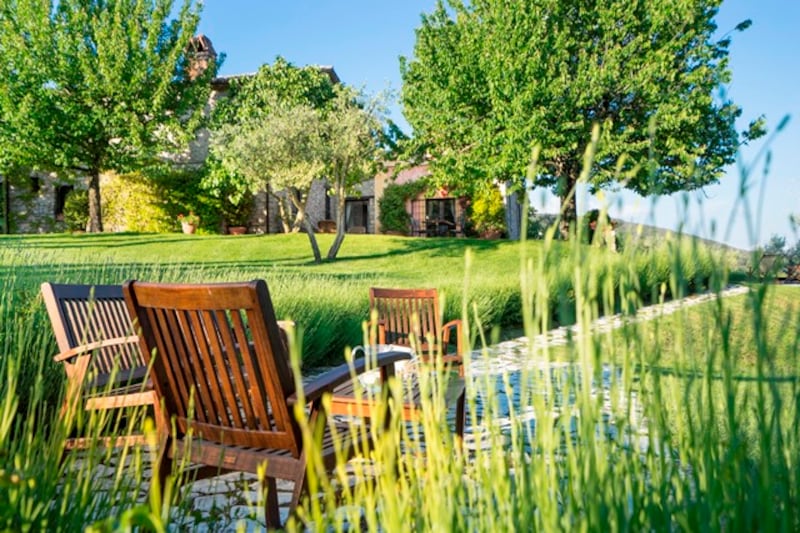
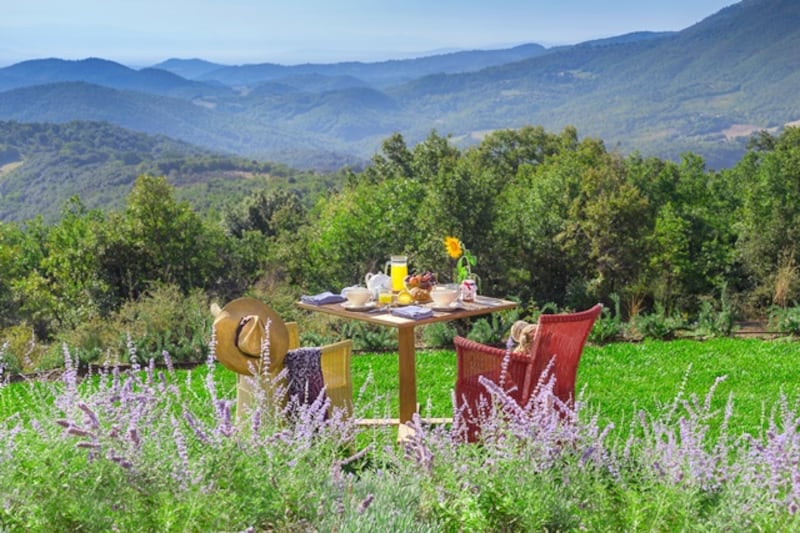
Spectacular views
Our accommodation, a beautifully renovated 16th-century farmhouse called Villa Subtilia, enjoys a spectacular view of the Monte Tezio valley. At the heart of it is Antognolla Castle, a 12th-century fortress and golf course that is currently being developed by Russian businessman Andrei Yakunin for a mere €150 million. The view is perhaps best enjoyed from the outdoor infinity pool with a bottle of the local Grechetto wine on ice.
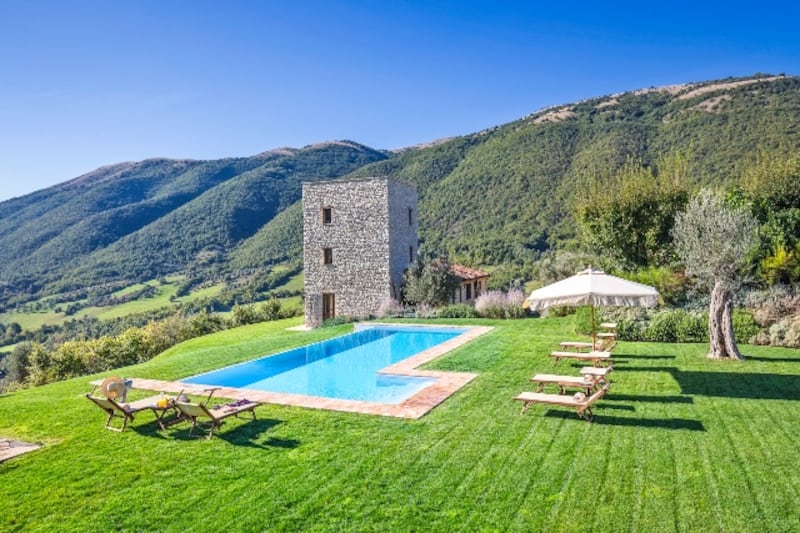
At night the only noise you’ll have to handle is the cicada chorus as you watch the sunset from your terrace, and soak up the atmosphere in these vast, unbroken Italian hills. When we visit it is late May, and the valleys are still lush and green ahead of the dead heat of summer, but arrive in spring and you’ll be greeted with a riot of wildflower colour. The wildness of the territory means that there are deer, game birds and even wolves in the Holm oak forests, and if you wait until autumn you can go hunting for wild boar. Stick around until October, and you’ll see the olive harvest in full flow.
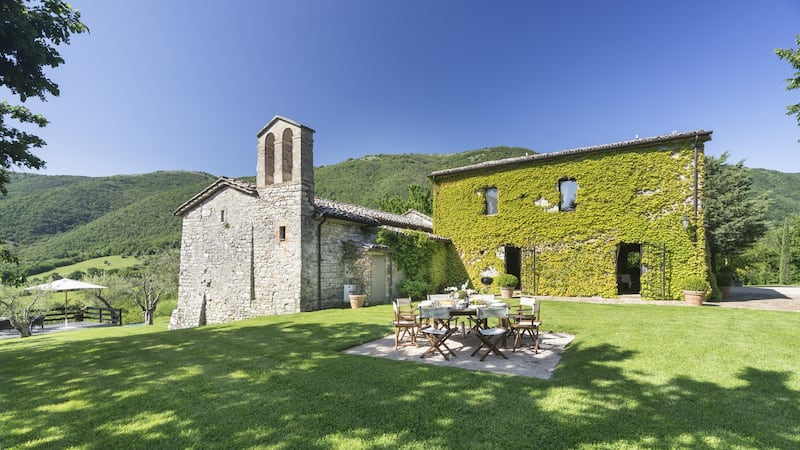
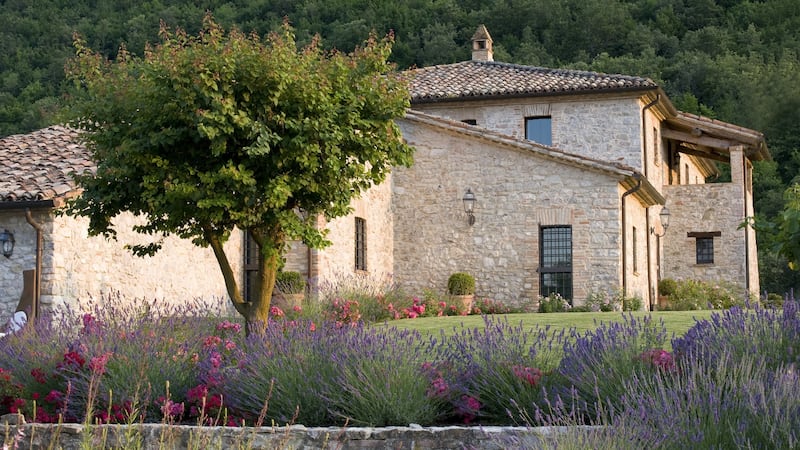
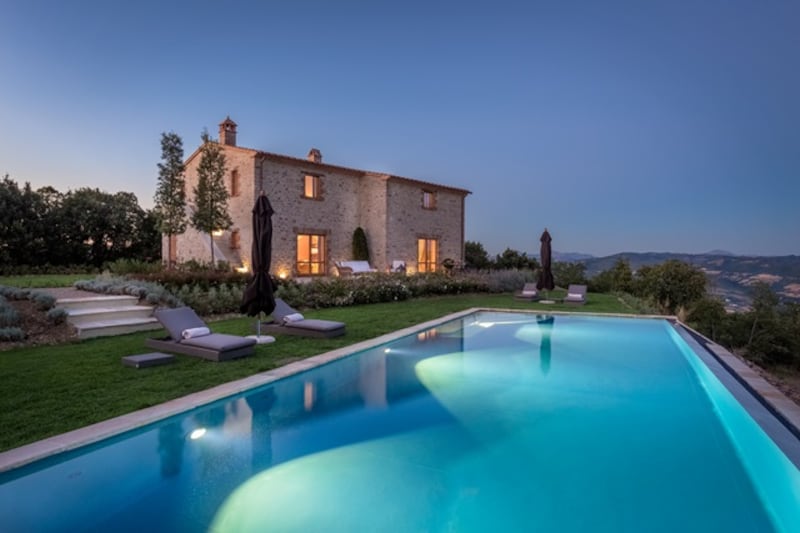
If that sounds remote, that’s because it is, so travelling around this region means you will need a car. The nearest restaurant is the estate’s own excellent, relatively new Il Caldero in La Bruna, but it’s still at best a 20-minute drive along those tricky dirt roads. A more indulgent option, if you haven’t brought your own groceries, is to order food that is brought or made on the premises, from their terrific breakfasts to the unbridled decadence of a private chef.
Given that the villa can accommodate up to 18 guests with the apartment next door, this is definitely a holiday for larger groups or families looking for a rustic escape with luxury facilities, and without the sometimes smothering, sterile feeling that comes with many four- or five-star destinations. Get a good gang together and you can live like Italian royalty without breaking the offshore bank.
See murlo.com, +39 346 734 3527. Villas on the estate are from €2,900 per week, or €550 per night, sleeping 6 to 12 people. Apartments are from €1,400 per week, or €280 per night and sleep four people.
Umbria: Five to see
Assisi
The town of Assisi boasts two ecclesiastical heavyweights among its numbers: St Francis, who had a way with animals, and St Clare, the founder of the Poor Sisters, now the Poor Clares. The town's history stretches much further back than that, as evidenced by the city's Roman walls, forum and Temple of Minerva, but the many churches and the spectacular basilica, with Francis's tomb, are the chief reasons for visiting. Despite the heavy tourist footfall it feels a lot calmer than many of Italy's tourist hotspots, and the views of the countryside below are spectacular.
Gubbio
We arrive in the gorgeous hilltop town of Gubbio in time for one of the oddest, most colourful pageants of the region – the Palio della Balestra, or crossbow tournament. In the Piazza Grande, teams of men (it’s all men) represent their local towns by wearing very tight costumes and parading in front of a bemused crowd, overseen by a group of uppity locals in full velvet, courtly gear. After many, many speeches, there is a bit of competitive flag juggling, which both teams appear to have practised at least once, and is every bit as impressive as it sounds.
Then it’s down to the real action. The teams man stationary crossbows the size of a small horse and fire large arrows with tremendous violence about 36 metres across the courtyard, aiming for a target that’s about the width of two hands. Nearly every one seems to hit the mark, and before long it’s thick with wood, with arrows bouncing off the packed bullseye. The team members kneel underneath to squint closely as the thicket thickens, and after an hour or two we have absolutely no idea what the rules are or how a winner is picked. Don’t miss it.
Montone
A small, charming walled medieval town, Montone is what many people imagine when they think of hilltop Italian villages. Beautiful stone walls, dusky town squares that children charge around while their parents eat terrific late-night meals, and the odd soft, sad bell tolling as if on cue. It might be tiny, but this being Umbria, it has an embarrassment of authentic restaurants to choose from. Eat, drink and gesture with your fingertips to show how good it all is.
Perugia
If you feel you need a bit more civilisation, head for the local capital. Dump the car as soon as you can and take one of the many escalators or stairs up to the charming town centre. Also try to make your trip coincide with one of its many festivals, the Umbrian Jazz Festival being a particular highlight.
Orvieto
This town, virtually impregnable, was last conquered by Julius Caesar, and its volcanic cliffs hide another secret – an underground city of 1,200 stairs, wells, tunnels and rooms. A tourist favourite, so expect it to be busier than most Umbrian towns.
Laurence Mackin stayed as a guest at Tenata Di Murlo





















